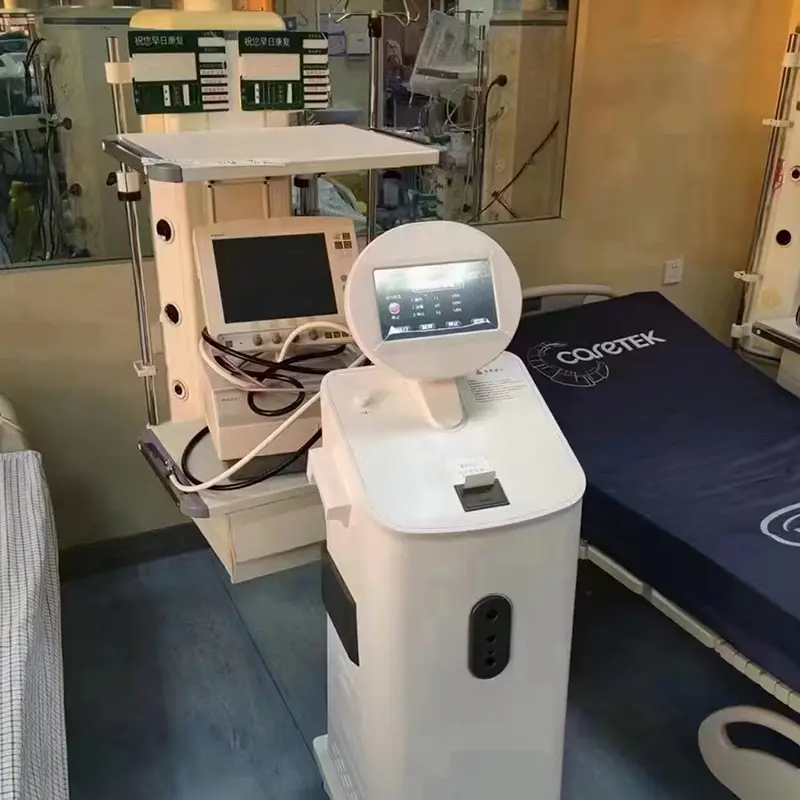Ventilator Circuit Sterilizer: A Step Towards Infection Prevention
Introduction:
In the field of healthcare, preventing the spread of infections is crucial for patient safety. Ventilator circuits play a vital role in supporting patients who require respiratory assistance. Proper sterilization of these circuits is essential to minimize the risk of healthcare-associated infections (HAIs) and ensure optimal patient care. In this article, we explore the importance of ventilator circuit sterilization, discuss different sterilization methods, and highlight best practices for infection prevention.
The Significance of Ventilator Circuit Sterilization:
Ventilator circuits are in direct contact with patients, delivering life-sustaining respiratory support. However, these circuits can become contaminated with bacteria, viruses, and other pathogens. Failure to sterilize them properly can lead to the transmission of harmful microorganisms, posing serious health risks to vulnerable patients. Effective sterilization of ventilator circuits reduces the likelihood of HAIs and promotes safer healthcare environments.
Methods of Ventilator Circuit Sterilization:
High-Level Disinfection:
High-level disinfection is a commonly used method for sterilizing ventilator circuits. This process involves the use of chemical agents that effectively eliminate microorganisms, including bacteria, viruses, and fungi, from the circuits. Common high-level disinfectants include peracetic acid, hydrogen peroxide, and quaternary ammonium compounds. Circuits are thoroughly cleaned and immersed in the disinfectant solution for the specified contact time, as recommended by the manufacturer. This method ensures complete eradication of pathogens while preserving the integrity of the circuits.
Sterilization by Heat:
Heat sterilization is another effective method for eliminating microorganisms from ventilator circuits. Autoclaving, or steam sterilization, is commonly used in healthcare facilities. The circuits are placed in autoclave bags and exposed to high-pressure steam at elevated temperatures for a specified duration. This process completely eradicates bacteria, viruses, and other pathogens. It is essential to follow proper packing techniques and sterilization parameters to ensure the desired results are achieved. However, it is important to consider that heat sterilization may not be suitable for circuits with certain materials that are sensitive to high temperatures.
Single-Use Disposable Circuits:
Single-use disposable circuits have gained popularity as an alternative to traditional reusable circuits. These circuits are designed for single patient use and are discarded after each use, eliminating the need for sterilization. Single-use disposable circuits mitigate the risk of cross-contamination between patients and provide a convenient and efficient solution for infection prevention. However, they may have cost considerations and generate higher amounts of waste.
Best Practices for Ventilator Circuit Sterilization:
Adherence to Manufacturer Guidelines:
Follow the manufacturer's instructions for cleaning and sterilizing ventilator circuits. This includes using the recommended disinfectants, following proper techniques, and adhering to the suggested contact times and temperatures. It is crucial to ensure compatibility between the cleaning agents and the circuit components.
Regular Cleaning and Inspections:
Implement regular cleaning protocols to remove any debris or organic material from the circuits. Thoroughly inspect the circuits for signs of wear, damage, or deterioration that may impact their sterilization and functionality. Damaged circuits should be replaced promptly to maintain safety and prevent potential contamination.
Staff Training and Education:
Ensure healthcare providers receive comprehensive training on proper cleaning and sterilization techniques for ventilator circuits. This training should cover infection prevention protocols, the correct use of disinfectants, and steps to ensure equipment integrity. Regular education updates and performance evaluations help maintain adherence to best practices and minimize the risk of errors.
Documentation and Quality Control:
Maintain detailed records of cleaning and sterilization activities, including the date, time, personnel responsible, and any issues or findings. Regular quality control checks and audits should be conducted to ensure compliance with established protocols and identify areas for improvement.
Conclusion:
Sterilization of ventilator circuits is vital for infection prevention and patient safety in healthcare settings. Proper sterilization techniques, including high-level disinfection, heat sterilization, or the use of single-use disposable circuits, effectively eliminate harmful microorganisms. Adhering to manufacturer guidelines, regular cleaning, staff training, and documentation contribute to a comprehensive sterilization process. By prioritizing infection prevention through ventilator circuit sterilization, healthcare providers can create a safer environment for patients, reduce the risk of HAIs, and provide optimal care.
